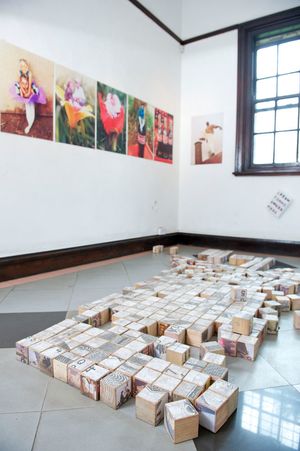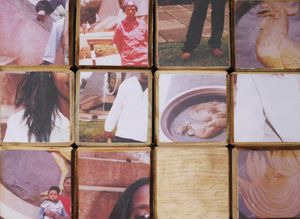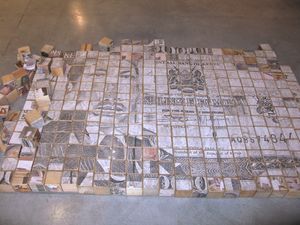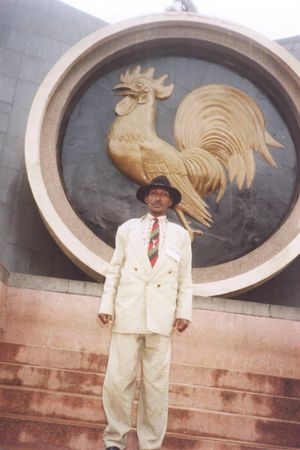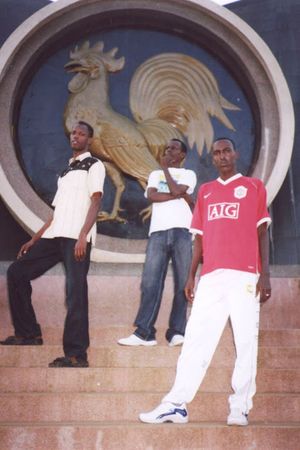Samson’s Dead Stock: A Matrix of Remembering and Forgetting
2009
Samson's Dead Stock_03_Image_2009_(c)Samson-7
Open-air Photographers In Nairobi - Sam Hopkins
Originally published in the Piga Picha exhibition, September 2009
The 1980s saw a distinct shift in the production of studio photography in Kenya. The advent of colour photography and the availability of affordable cameras caused many of the traditional studios to be redundant and hence close. However, this in turn was also instrumental in the emergence of a new niche of studio photographers; the so called ‘Open-air photographers’
Armed with either a rangefinder or an SLR these photographers worked, and still work, in the parks and public spaces of Nairobi. Their studio is the city, but a city that functions mainly as a backdrop for the highly choreographed and stylized portraits that the photographers take. These photographers inhabit one particular patch of public space, which becomes their office, and some of the veteran photographers have had the same office for the past 20 years. This territory affords the photographer various pre-established scenes within which to take his clients photograph.
There are three major sites where the Open-air photographers work in Nairobi; Central Park, The Kenyatta International Conference Centre and Uhuru Park. Most of these photographers work in a similar fashion. They have a territory/office within which they work, they display and promote their work visually with photo albums and display boards, and they keep most of their archive on site, in a tin trunk, which serves both to demarcate which is their space, and as a repository for work to be collected. However, what does differ significantly between these sites is the style that the photographers employ.
Central Park is dominated by the imposing Nyayo Monument, which was built in 1988 to commemorate the first 10 years of Daniel Arap Moi‘s presidency. The 11 photographers that work here tend to incorporate this into their work. They take photos using the various motifs on the different sides of the monument as backdrop, as well as varying the perspective on the monument.
The 15 photographers who work around the Kenyatta International Conference Centre (KICC) work in a similar fashion to include the site within their photos. However, these photographers have developed a playful technique working with perspective to create the illusion that their client is either holding or standing on the tower. Also, as a special feature, clients can ascend the tower to take a photo with the whole city as backdrop.
The largest setting of open-air photography is Uhuru Park where approximately 40 photographers work. This is also the site of the most experimental styles within this genre of studio photography. Uhuru Park has an amazing view of the Nairobi Skyline and the photographers here use montage techniques to show their clients either sitting on the buildings or flying through the air. Others prefer to have themselves pictured sitting in a flowers blossom or on top of a Coca Cola bottle.
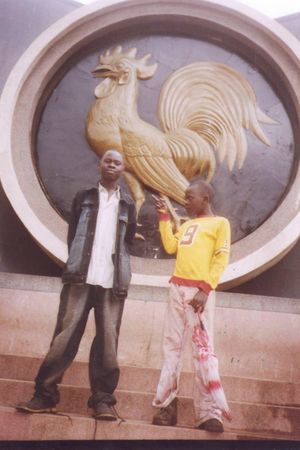
Samson's Dead Stock_03_Image_2009_(c)Samson-7
In many ways the Open-air photographers function just like traditional studio photographers; using their particular urban space as a studio backdrop, creating stylized portraits, developing a ‘house’ style and building an archive of work. Nevertheless, the fact that they operate in public space does seem to lend them a specific difference. Their studios are not simulated settings, with props and fake backdrops, but actual places, even if these ‘actual places’ do seem almost unreal. And, the often intimate negotiation between photographer and client of how the picture will be created, takes place in front of an audience. Maybe this audience is not watching, but it is a very different context from the quiet backroom of a conventional studio.
Thus the Open-air photographers seem to operate on the cusp of studio photography. They evidence many of the stylistic elements of the studio, yet somehow move beyond it, appropriating elements from the flux of their unique ‘public studio’ that surrounds them.
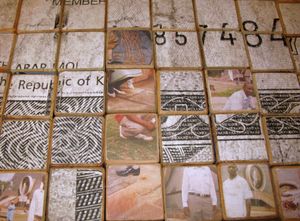
Samson's Dead Stock_02_Installation Shot_Piga Picha_Bordeaux_2009_Documentation_(c)Nur Goni-6
download text as PDF